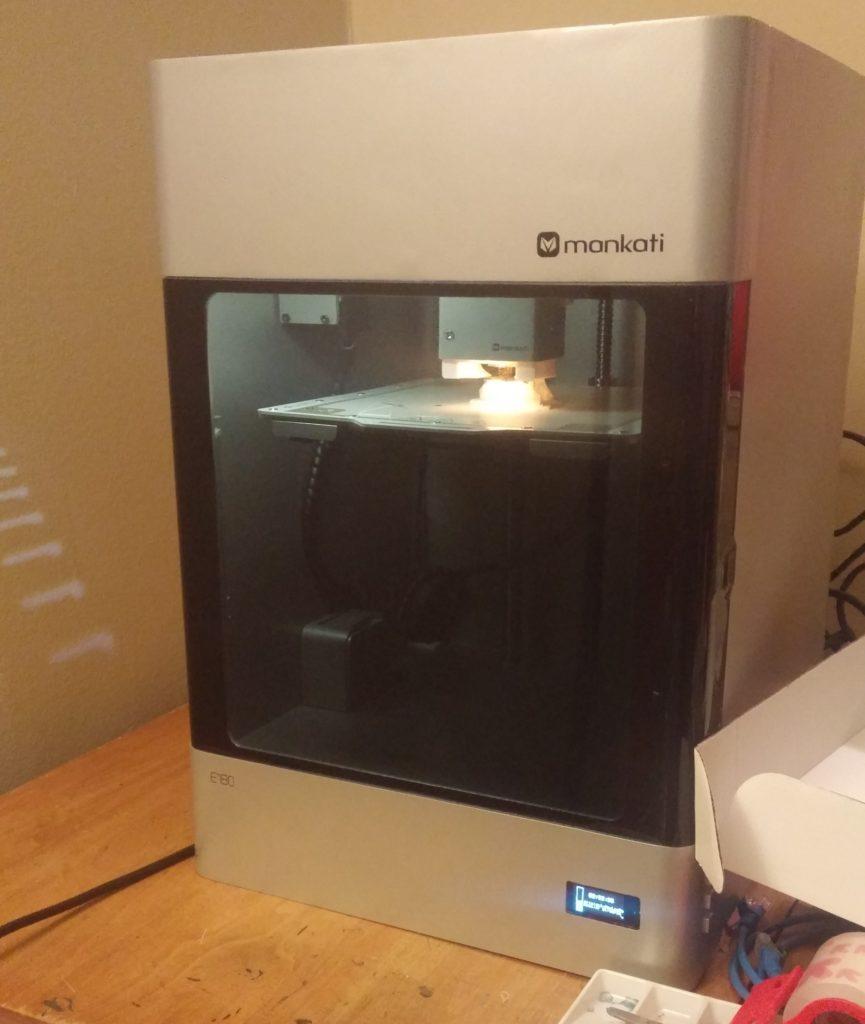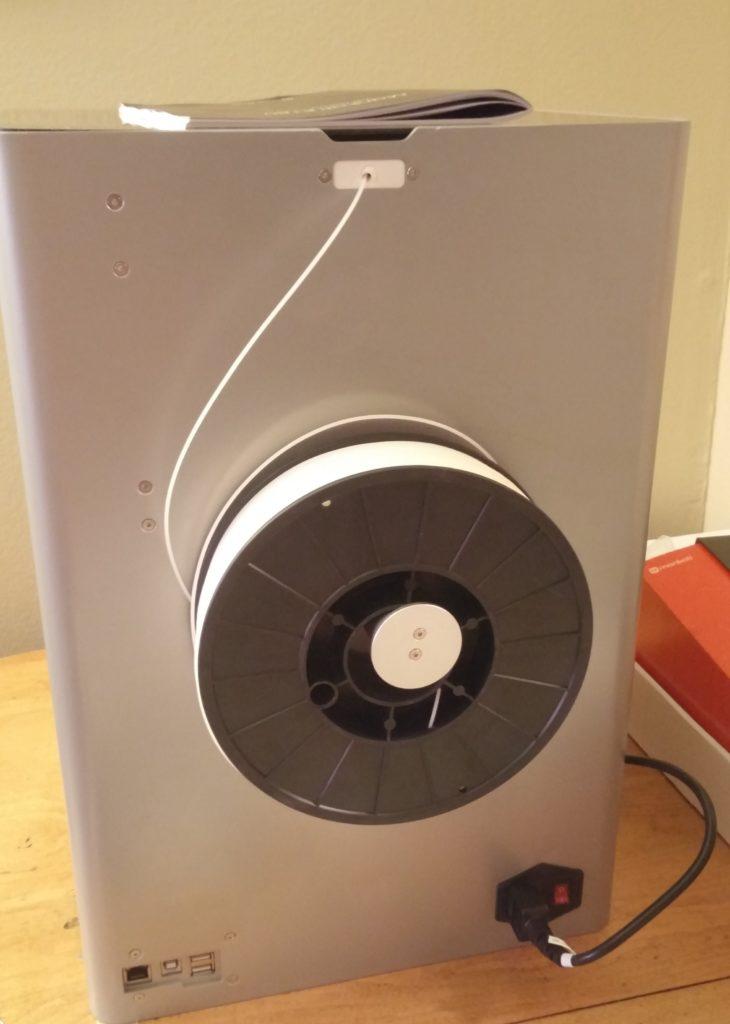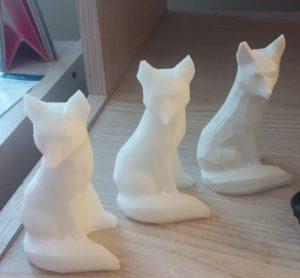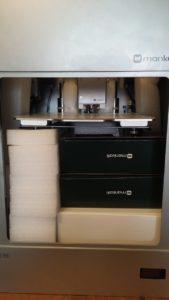 Back in August, I learned for the first time about the newly released Mankati E180 3D printer from Shanghai-based Mankati. I was intrigued by its description, which claimed that it was the ideal 3D printer for both beginners and professionals. I’m automatically interested in any printer that meets a wide range of needs by being easy enough for inexperienced users while also offering enough options and control to satisfy more seasoned makers – while delivering high-quality prints, of course.
Back in August, I learned for the first time about the newly released Mankati E180 3D printer from Shanghai-based Mankati. I was intrigued by its description, which claimed that it was the ideal 3D printer for both beginners and professionals. I’m automatically interested in any printer that meets a wide range of needs by being easy enough for inexperienced users while also offering enough options and control to satisfy more seasoned makers – while delivering high-quality prints, of course.
I was pretty excited, therefore, when I heard from Mankati a few months later asking me if I’d like to test and review an E180 for myself. I said yes immediately, and I was pleased as soon as the printer arrived at my door a few weeks later. First of all, I very much appreciated the sleek vertical design, which made it much easier to lift and transport than wider, bulkier printers I’ve worked with. I had no trouble setting it up on my work table, and opened the door of the printer to find all of its accessories neatly packed inside. Two spools of white filament, one PLA and one ABS, were included, as well as a tool kit that included pretty much everything you could possibly need for printing, post-processing and maintenance: a scraper, tweezers, pliers, protective gloves and glasses, a wire brush, a hexagon wrench and a socket wrench, plus an Ethernet cable and USB flash drive.
The printer was quick and easy to set up, and a touchscreen made calibrating the build platform and installing the filament simple. Connecting it to my wireless network was easy, too. I then downloaded the included mWare software, which was installed on the USB drive, and that’s when I began to see that Mankati’s claims of both beginner- and professional-friendliness are true.
 Step-by-step instructions in the user manual make it very easy to get started with the software, and if you’ve never 3D printed before, mWare helps ease you into the process with preset profiles for each of Mankati’s materials, of which they’ve released a lot more since the E180’s initial introduction. There are plenty of options to play around with, however. Layer heights range from 0.06 to 0.26mm, though for most of the printing I did, I stuck with the default of 0.2mm – and the prints turned out great.
Step-by-step instructions in the user manual make it very easy to get started with the software, and if you’ve never 3D printed before, mWare helps ease you into the process with preset profiles for each of Mankati’s materials, of which they’ve released a lot more since the E180’s initial introduction. There are plenty of options to play around with, however. Layer heights range from 0.06 to 0.26mm, though for most of the printing I did, I stuck with the default of 0.2mm – and the prints turned out great.
 Honestly, everything that Mankati claims about the printer seems to be true, and that’s a rare thing. My prints were smooth and finely detailed, and the automatically generated supports, for the most part, snapped off cleanly and easily. I played around with some different print speeds, using a low poly fox model as my test subject. (Friends and family, you’re all getting 3D printed foxes for Christmas, by the way.) I didn’t see any difference in quality between the normal and fast print speeds, although the case may be different with more complex models.
Honestly, everything that Mankati claims about the printer seems to be true, and that’s a rare thing. My prints were smooth and finely detailed, and the automatically generated supports, for the most part, snapped off cleanly and easily. I played around with some different print speeds, using a low poly fox model as my test subject. (Friends and family, you’re all getting 3D printed foxes for Christmas, by the way.) I didn’t see any difference in quality between the normal and fast print speeds, although the case may be different with more complex models.
It’s not the quietest printer in the world, as I realized when I set a print job to run overnight. The air filter was great, though – even with the ABS, there was barely any odor given off during printing. I had some difficulty with the remote monitoring feature – it tended to go offline and refuse to reconnect after a few minutes of printing, but the overall wireless printing function worked fine.
While I was impressed and pleased with the printer as a whole, the one thing that stood out the most to me, personally, was the build plate. I adore this build plate. I’m not the most patient person in the world, so build plate adhesion issues tend to drive me out of my mind. I had zero issues with the E180’s heated, perforated metal print bed. Every print, both ABS and PLA, stuck perfectly, requiring no glue, hairspray or other adhesive. They didn’t move at all during the print process, and when it was finished, they snapped cleanly off – I never had to use the scraper or even clean the bed other than brushing off a few stray bits of filament here and there. Every 3D printer should use this lovely little perforated build plate.
- Freeform Vase by Shapescribe
Overall, I really enjoyed by experience with the Mankati E180, and I was sad to have to pack it up and ship it off again. This is a printer I could see getting many years of use out of. Like I said before, it’s an easy starter printer, but you won’t get bored with it once you become more advanced, and it’ll deliver consistently quality prints – as least as far as I could tell in my few weeks of working with it. Here’s a very quick look at the E180 printing one of my many foxes:
Discuss in the Mankati E180 forum at 3DPB.com.
[All photos/video taken by Clare Scott for 3DPrint.com]
Subscribe to Our Email Newsletter
Stay up-to-date on all the latest news from the 3D printing industry and receive information and offers from third party vendors.
You May Also Like
3D Printing Unpeeled: New Arkema Material for HP, Saddle and Macro MEMS
A new Arkema material for MJF is said to reduce costs per part by up to 25% and have an 85% reusability ratio. HP 3D HR PA 12 S has been...
3D Printing News Briefs, January 20, 2024: FDM, LPBF, Underwater 3D Printer, Racing, & More
We’re starting off with a process certification in today’s 3D Printing News Briefs, and then moving on to research about solute trapping, laser powder bed fusion, and then moving on...
3D Printing Webinar and Event Roundup: December 3, 2023
We’ve got plenty of events and webinars coming up for you this week! Quickparts is having a Manufacturing Roadshow, America Makes is holding a Member Town Hall, Stratafest makes two...
Formnext 2023 Day Three: Slam Dunk
I’m high—high on trade show. I’ve met numerous new faces and reconnected with old friends, creating an absolutely wonderful atmosphere. The excitement is palpable over several emerging developments. The high...


































